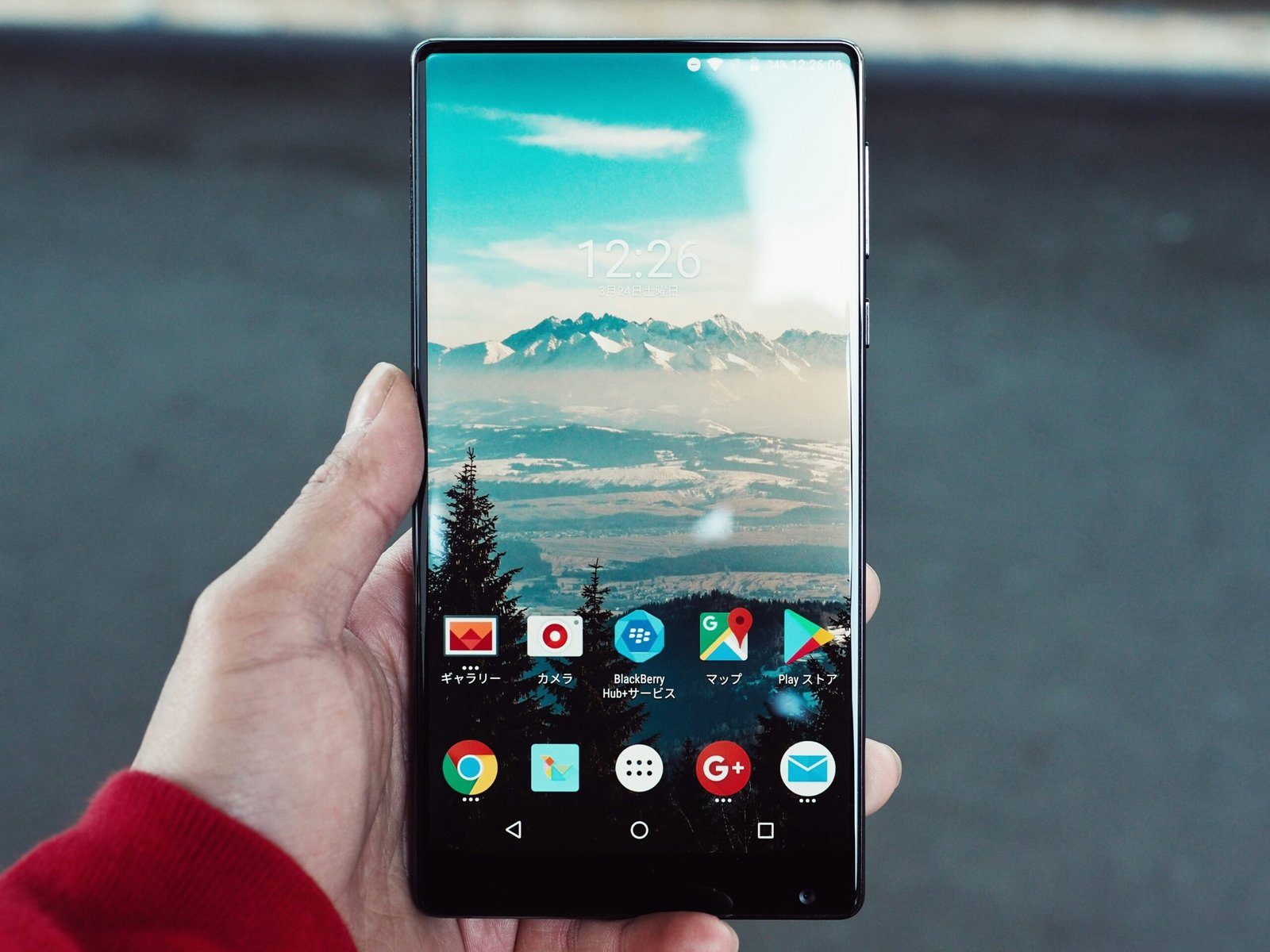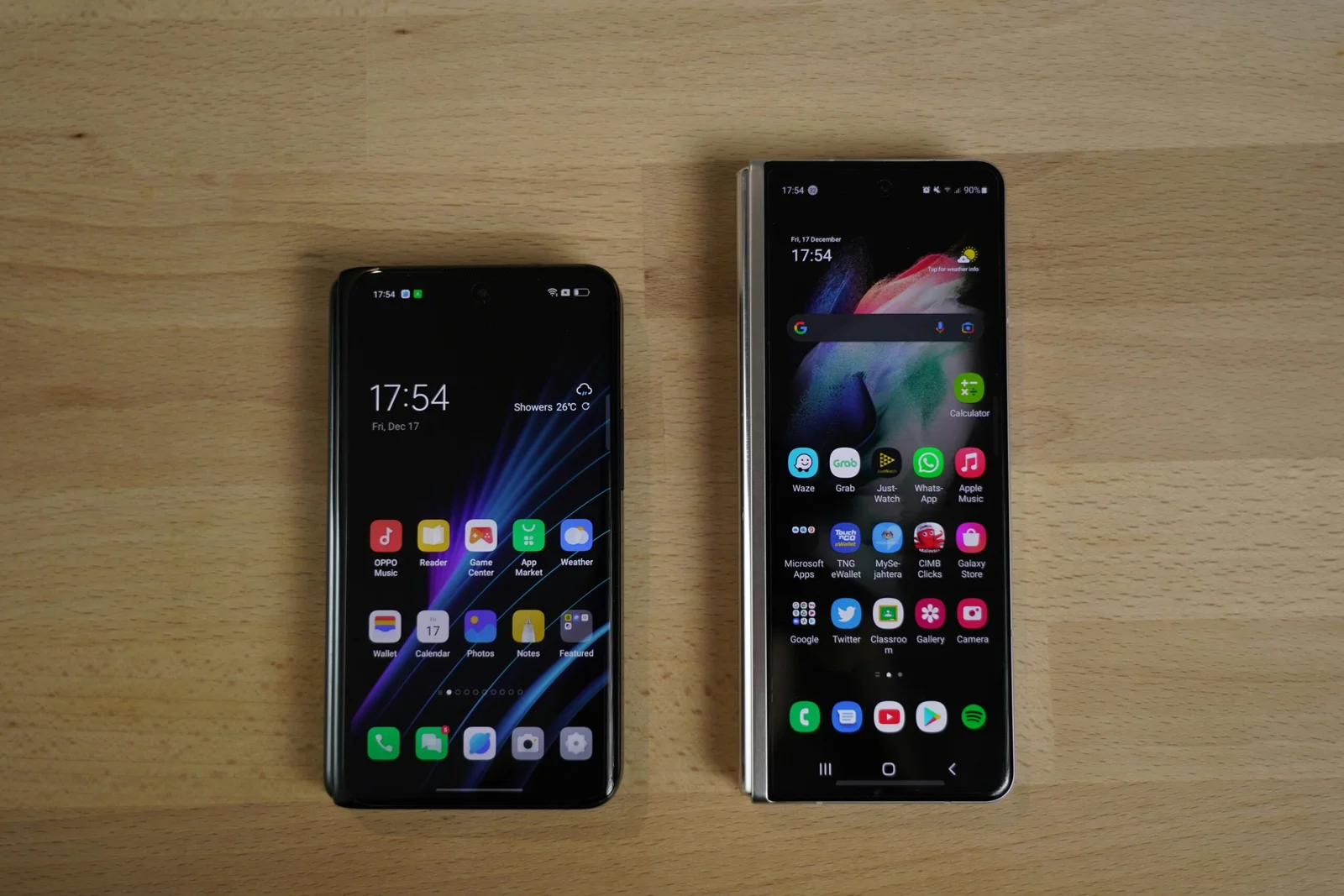
Introduction to AI in Smartphones
Artificial intelligence (AI) has emerged as a transformative force, reshaping various sectors, including mobile technology. At its core, AI refers to the simulation of human intelligence processes by machines, particularly computer systems. These processes encompass learning, reasoning, and self-correction. The journey of AI began decades ago, but its integration into consumer electronics, particularly smartphones, marks a significant milestone in its evolution.
Historically, AI was confined to research laboratories and high-performance computing environments. However, advancements in machine learning, neural networks, and data analytics have facilitated its transition into more accessible and portable devices. Modern smartphones now boast AI capabilities that were once the domain of supercomputers. This convergence of AI and mobile technology has given rise to a new era of smart functionalities that enhance user experience, efficiency, and personalization.
AI in smartphones is not just a buzzword; it is a fundamental component driving various features. From voice assistants like Siri and Google Assistant to advanced camera functionalities that utilize AI for scene detection and image enhancement, the dependency on AI technologies is palpable. Moreover, AI algorithms power predictive text, facial recognition, and even battery optimization, making everyday tasks more intuitive and efficient.
The increasing reliance on AI in smartphones signifies a broader trend toward intelligent devices that learn from user interactions and adapt accordingly. This symbiotic relationship between AI and smartphones fosters an ecosystem where devices anticipate user needs, deliver personalized content, and streamline operations. As AI continues to evolve, its role in smartphones is expected to expand, introducing more sophisticated features and applications that will further enhance our digital experiences.
“`html
AI in Photography and Imaging
Artificial Intelligence (AI) has revolutionized the realm of photography and imaging in modern smartphones, transforming how we capture and experience visual content. One of the most notable advancements is AI-driven scene recognition. By analyzing the scene in real-time, AI algorithms can identify various elements such as landscapes, food, pets, and people. This allows the camera to automatically adjust settings like exposure, contrast, and color balance, ensuring optimal image quality for each specific scene.
Another significant contribution of AI to smartphone photography is automatic photo enhancement. AI-powered features can intelligently enhance photos by reducing noise, sharpening details, and balancing colors. These enhancements are often subtle but collectively result in a more polished and professional-looking image. Users benefit from these improvements without needing to manually edit their photos, thus making high-quality photography more accessible to everyone.
Portrait modes have also seen dramatic improvements thanks to AI. By leveraging machine learning algorithms, smartphones can now create more accurate depth-of-field effects, commonly known as the bokeh effect. This allows for stunning portrait shots where the subject is in sharp focus while the background is artistically blurred. AI ensures that even complex elements like hair and edges are accurately detected and separated from the background, enhancing the overall aesthetic of the photo.
Night photography is another area where AI has made a substantial impact. Low-light conditions have traditionally been a challenge for smartphone cameras, but AI algorithms can now analyze multiple frames taken in quick succession, merging them to create a single, well-lit image. This technique, known as multi-frame processing, significantly reduces noise and improves clarity, enabling users to capture vivid and detailed photos even in poor lighting conditions.
Overall, the integration of AI in smartphone photography and imaging has not only elevated the quality of photos but also simplified the process, allowing users of all skill levels to produce stunning images effortlessly. As AI technology continues to evolve, we can anticipate even more innovative features that will further enhance our photographic experiences.
Voice Assistants and Natural Language Processing
AI-powered voice assistants such as Siri, Google Assistant, and Alexa have profoundly transformed the way users interact with their smartphones. Central to their functionality is Natural Language Processing (NLP), a subset of AI that allows these assistants to understand, interpret, and respond to human language in a manner that feels natural and intuitive. NLP combines computational linguistics with machine learning techniques to process and analyze large amounts of natural language data.
The evolution of voice assistants has been remarkable. Initially, these systems could only perform basic tasks such as setting alarms or reminders. However, advancements in NLP have significantly expanded their capabilities. Modern voice assistants can now handle complex queries, provide detailed information, control smart home devices, send messages, and even engage in multi-turn conversations that require contextual understanding. This evolution is driven by continuous improvements in AI algorithms and vast datasets that enable more accurate speech recognition and better contextual comprehension.
Voice assistants are integrated deeply into various smartphone functionalities, enhancing user experience by offering hands-free operation and personalized assistance. For instance, they can proactively suggest calendar events, provide weather updates, and even detect user preferences to tailor responses. This seamless integration extends to third-party applications, allowing users to perform a wide array of actions through voice commands, thereby increasing productivity and convenience.
In addition to enhancing user experience, these AI-powered systems have significant implications for accessibility. Voice assistants can aid individuals with disabilities by providing an alternative means of interaction with their devices, thus promoting inclusivity. The continuous development in NLP and AI ensures that voice assistants will become even more adept in understanding diverse accents, dialects, and languages, further broadening their accessibility and utility.
AI in Mobile Security
Artificial Intelligence (AI) has significantly revolutionized the realm of mobile security, making smartphones more secure than ever. One of the most prominent AI-driven security features is facial recognition. Leveraging deep learning algorithms, facial recognition technology can accurately identify a user by analyzing their unique facial features. This advanced security measure not only enhances convenience but also provides a robust defense against unauthorized access.
In addition to facial recognition, AI has also improved fingerprint scanning technology. Traditional fingerprint sensors have evolved with AI, allowing for more precise and faster identification. Machine learning algorithms can continually learn and adapt to minute changes in a user’s fingerprint patterns, thereby increasing the accuracy and reliability of the scanning process. This ensures that only the rightful owner can unlock and access the smartphone.
Beyond biometric authentication, AI plays a crucial role in behavioral biometrics. Unlike physical biometrics, behavioral biometrics analyze user behavior patterns, such as typing speed, swipe patterns, and even how a user holds their device. AI algorithms can create a unique behavioral profile for each user, which can be used to detect anomalies and potential security threats. If an unusual behavior is detected, the AI system can trigger security protocols to prevent unauthorized access.
Moreover, AI algorithms are adept at detecting anomalies in real-time, which is vital for safeguarding personal data. By continuously monitoring user interactions and device usage, AI can identify suspicious activities and generate alerts or take corrective actions to mitigate security risks. This proactive approach ensures that potential threats are addressed before they can compromise the device or the user’s personal information.
Overall, the integration of AI in mobile security has brought about a paradigm shift, providing enhanced protection and peace of mind for smartphone users. By harnessing the power of AI, modern smartphones can offer sophisticated security features that are both effective and user-friendly, ensuring that personal data remains protected in an increasingly digital world.
AI in Battery Management
In the ever-evolving landscape of modern smartphones, AI has emerged as a pivotal element in optimizing battery life. By leveraging machine learning algorithms, AI can effectively manage power consumption, thereby enhancing the overall user experience. One of the most significant advantages of AI in battery management is its ability to learn and adapt to user habits. Through continuous analysis of user behavior, AI can predict usage patterns and adjust power settings accordingly, ensuring that battery life is maximized without compromising performance.
AI-powered features such as adaptive battery and smart charging are prime examples of how technology can contribute to energy efficiency. Adaptive battery systems analyze which apps are used the most and limit background activity for less frequently used applications. This dynamic adjustment helps in conserving energy by prioritizing power allocation to essential tasks. Additionally, smart charging features utilize AI to monitor charging cycles, thus preventing overcharging and extending the battery’s lifespan. By intelligently managing the charging process, AI ensures that the battery remains healthy and efficient over prolonged periods.
Moreover, AI plays a crucial role in managing background processes. By identifying and limiting unnecessary processes, AI can significantly reduce power consumption. For instance, AI can detect when a smartphone is idle and switch to a low-power mode, thereby conserving battery. This intelligent management of resources not only enhances battery life but also contributes to a smoother and more responsive user experience. Furthermore, AI algorithms can optimize screen brightness and resolution based on ambient lighting conditions, ensuring that the display consumes minimal power while maintaining visibility.
The integration of AI in battery management systems exemplifies how advanced technology can lead to more energy-efficient smartphones. Through continuous learning and dynamic adjustments, AI ensures that battery usage is optimized, thereby providing users with longer-lasting and more reliable devices. As AI continues to evolve, its role in enhancing battery performance is likely to become even more significant, paving the way for smarter and more efficient smartphones.
AI in Personalized User Experience
Artificial Intelligence (AI) plays an indispensable role in enhancing the personalized user experience on modern smartphones. By leveraging advanced machine learning algorithms, AI can analyze user behavior and preferences to deliver tailored recommendations for apps, content, and settings. This customization extends beyond simple app suggestions to a holistic approach that encompasses various aspects of smartphone usage.
One of the most significant applications of AI in smartphones is its ability to provide personalized app recommendations. By scrutinizing user interactions, app usage patterns, and even social media activity, AI can predict which apps might be of interest to the user. This predictive capability enables users to discover new applications that cater to their specific needs and preferences, thereby enriching their overall smartphone experience.
AI also enhances content recommendations, offering users a curated selection of articles, videos, and music that align with their interests. Streaming services, news apps, and social media platforms utilize AI to analyze user data and present content that is most likely to engage them. This not only improves user satisfaction but also increases the time users spend on these platforms, creating a win-win situation for both users and service providers.
In addition to recommendations, AI significantly impacts the adaptability of smartphone interfaces. Adaptive interfaces adjust elements such as font size, button placement, and color schemes based on user preferences and usage patterns. This dynamic customization ensures that the interface remains intuitive and user-friendly, enhancing the overall user experience.
Predictive text and contextual suggestions are another area where AI shines. By learning from the user’s typing habits, AI can offer accurate word predictions and contextual suggestions, making typing faster and more efficient. This feature is particularly beneficial for users who communicate frequently through text, as it reduces the effort required to type out messages and emails.
Overall, AI’s ability to personalize the user experience in smartphones is a testament to its transformative potential. By making smartphones more intuitive and responsive to individual needs, AI not only enhances functionality but also elevates user satisfaction to unprecedented levels.
AI in Augmented Reality (AR) and Gaming
The integration of artificial intelligence (AI) in augmented reality (AR) has significantly revolutionized the user experience on modern smartphones. AI’s capacity for object recognition and spatial mapping is at the forefront of these advancements. By leveraging AI algorithms, AR applications can identify and interact with real-world objects in real-time, creating a seamless blend between the virtual and physical worlds. This capability is particularly beneficial in applications like navigation, where AI can recognize landmarks and provide contextual information, or in retail, where users can visualize how furniture would look in their homes.
In the realm of mobile gaming, AI’s influence is equally transformative. Intelligent NPCs (non-playable characters) are now more dynamic and responsive, offering a more immersive and challenging gaming experience. These characters can adapt their behavior based on the player’s actions, providing a more engaging and unpredictable gameplay. This dynamic interaction is made possible through advanced AI techniques such as machine learning, which enables NPCs to learn and evolve over time.
Furthermore, AI plays a crucial role in dynamic content generation, allowing games to offer personalized experiences. By analyzing player behavior and preferences, AI can tailor game environments, missions, and challenges to individual players. This level of customization enhances player engagement and satisfaction, making each gaming session unique. Additionally, AI-driven procedural content generation allows developers to create vast, diverse game worlds without the need for manual design, significantly reducing development time and costs.
Overall, AI’s contributions to AR and mobile gaming are profound. By enhancing object recognition, spatial mapping, and dynamic content generation, AI not only improves the functionality and appeal of AR applications but also elevates the complexity and enjoyment of mobile games. As AI technology continues to evolve, its impact on these fields is expected to grow, further blurring the line between virtual experiences and reality.
Future Prospects and Challenges
As we look to the future, the integration of Artificial Intelligence (AI) in modern smartphones promises groundbreaking advancements. Emerging AI technologies are set to redefine user experiences, making smartphones more intuitive and efficient. Innovations such as enhanced natural language processing, augmented reality, and advanced machine learning algorithms will enable smartphones to perform complex tasks with unprecedented precision. These advancements are expected to revolutionize various aspects of mobile use, from personalized recommendations and smart photography to real-time language translation and predictive text inputs.
However, the road to these advancements is not without its challenges. One of the foremost concerns is data privacy. As smartphones become more capable of processing and analyzing personal data, ensuring the security and confidentiality of this information becomes imperative. Users need to be assured that their data is being handled responsibly, with robust measures in place to prevent unauthorized access and misuse. Manufacturers and developers must prioritize the implementation of stringent data privacy protocols to build and maintain user trust.
Ethical considerations also come to the forefront as AI continues to evolve. The potential for AI to perpetuate biases and inequalities is a significant issue that requires careful attention. Developers must strive to create AI systems that are fair, transparent, and inclusive, avoiding the pitfalls of biased data and algorithmic discrimination. Moreover, the ethical use of AI in decision-making processes, such as facial recognition and user profiling, demands rigorous scrutiny to prevent abuse and ensure compliance with human rights standards.
Lastly, the need for sustainable AI development cannot be overstated. The increasing computational power required for sophisticated AI functionalities poses environmental challenges. It is crucial for the smartphone industry to adopt sustainable practices, such as optimizing energy efficiency and reducing the carbon footprint of AI processes. Through conscious efforts and innovative solutions, the industry can contribute to a more sustainable future while continuing to push the boundaries of AI technology.






